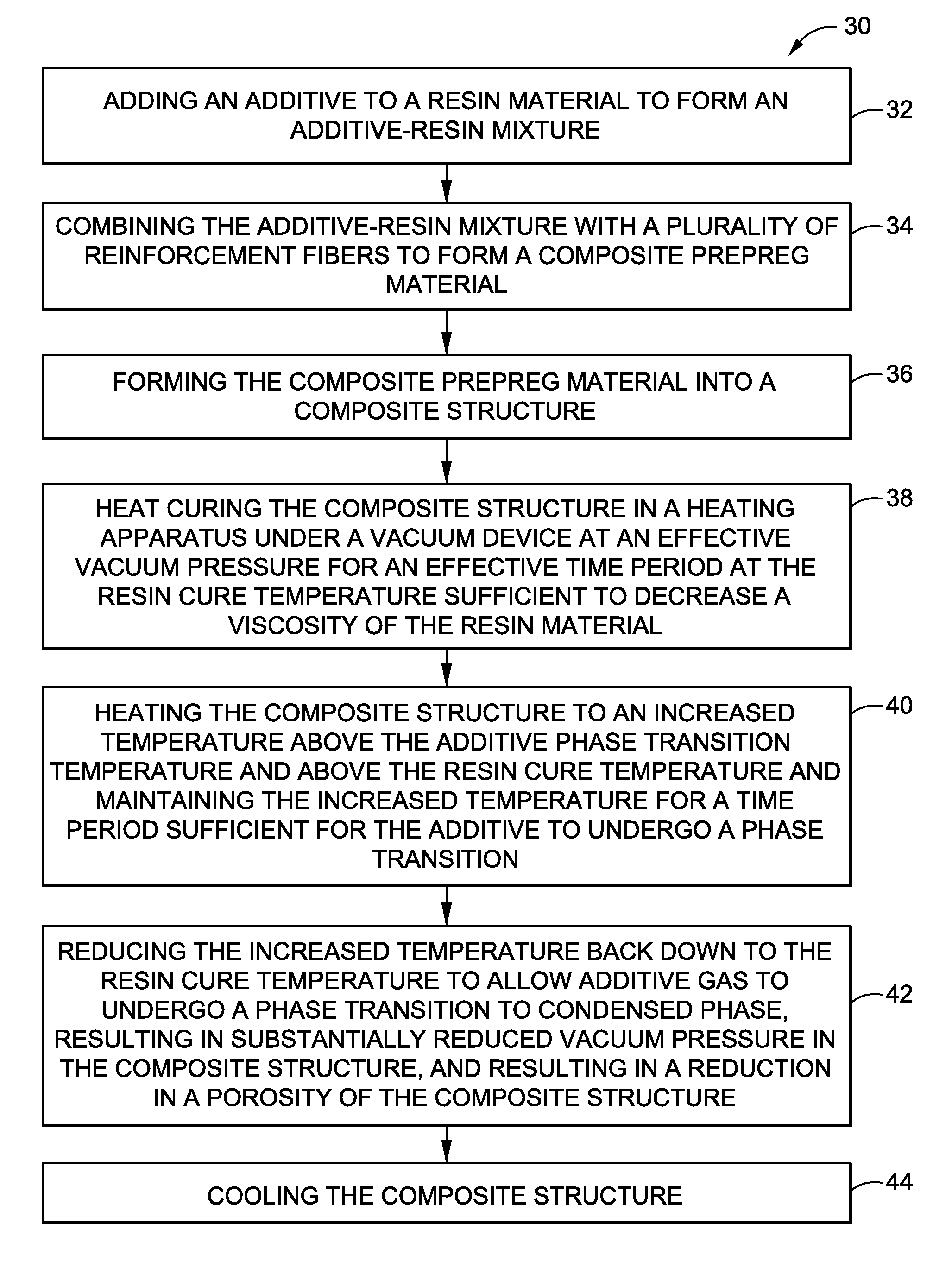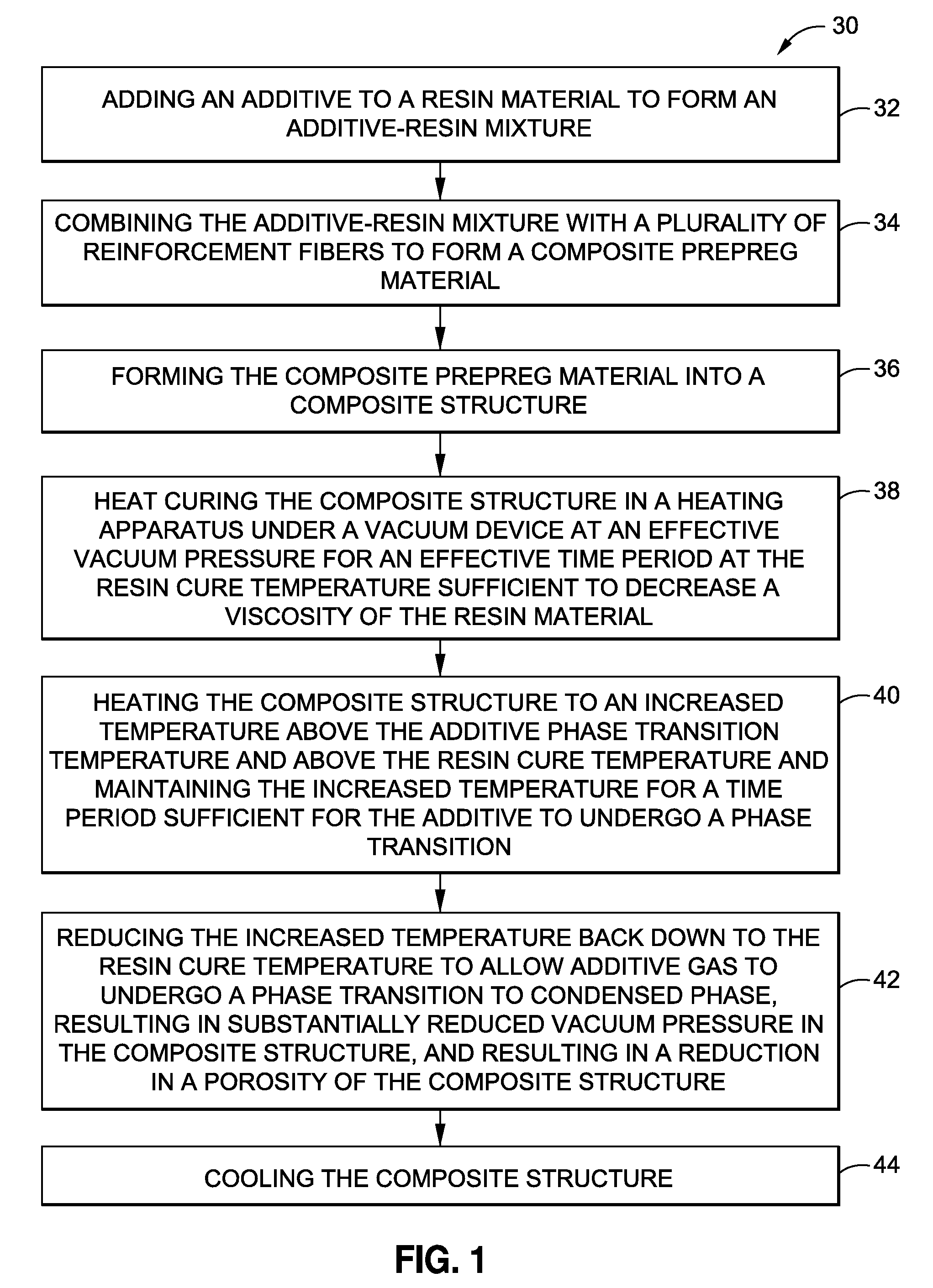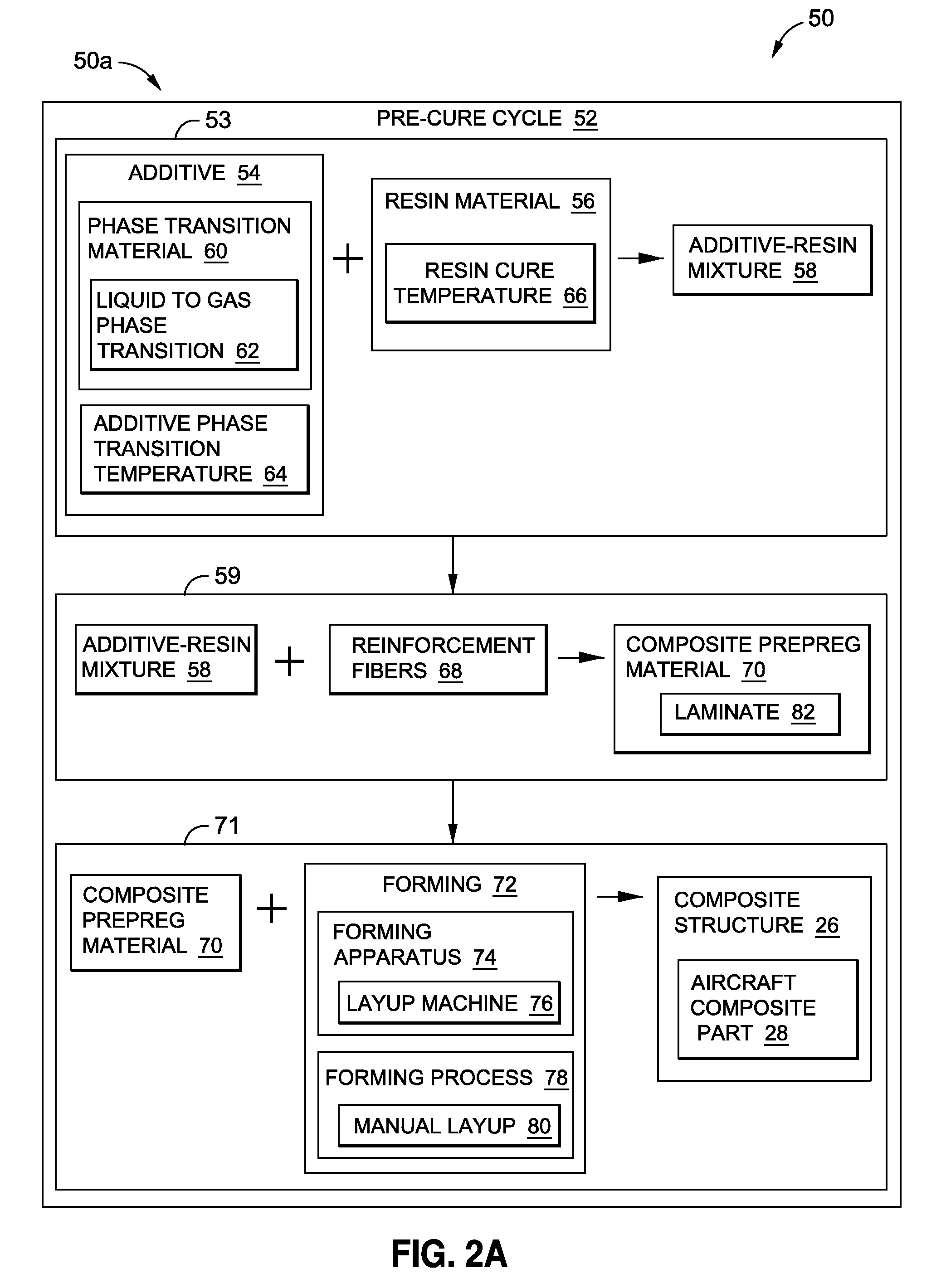Method and system to reduce porosity in composite structures
a composite structure and porosity reduction technology, applied in the field of composite structures, can solve the problems of increasing the overall cost of manufacturing large composite parts, voids, empty areas, etc., and achieve the effect of reducing porosity in composite structures
- Summary
- Abstract
- Description
- Claims
- Application Information
AI Technical Summary
Benefits of technology
Problems solved by technology
Method used
Image
Examples
Embodiment Construction
[0020]Disclosed embodiments will now be described more fully hereinafter with reference to the accompanying drawings, in which some, but not all of the disclosed embodiments are shown. Indeed, several different embodiments may be provided and should not be construed as limited to the embodiments set forth herein. Rather, these embodiments are provided so that this disclosure will be thorough and complete and will fully convey the scope of the disclosure to those skilled in the art.
[0021]Now referring to the Figures, FIG. 1 is an illustration of a flow diagram of an exemplary embodiment of a method 30 to reduce porosity 134 (see FIG. 2B) in a composite structure 26 (see FIG. 2A). FIG. 2A is an illustration of a block diagram of one of the embodiments of a system 50 of the disclosure showing a system portion 50a in the form of a pre-cure cycle 52. FIG. 2B is an illustration of a block diagram of one of the embodiments of a system 50 of the disclosure showing a system portion 50b in th...
PUM
| Property | Measurement | Unit |
|---|---|---|
| temperature | aaaaa | aaaaa |
| temperature | aaaaa | aaaaa |
| temperature | aaaaa | aaaaa |
Abstract
Description
Claims
Application Information
 Login to View More
Login to View More - R&D
- Intellectual Property
- Life Sciences
- Materials
- Tech Scout
- Unparalleled Data Quality
- Higher Quality Content
- 60% Fewer Hallucinations
Browse by: Latest US Patents, China's latest patents, Technical Efficacy Thesaurus, Application Domain, Technology Topic, Popular Technical Reports.
© 2025 PatSnap. All rights reserved.Legal|Privacy policy|Modern Slavery Act Transparency Statement|Sitemap|About US| Contact US: help@patsnap.com



